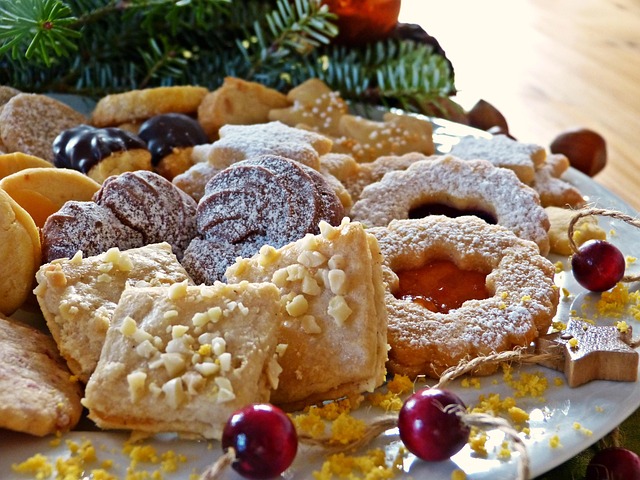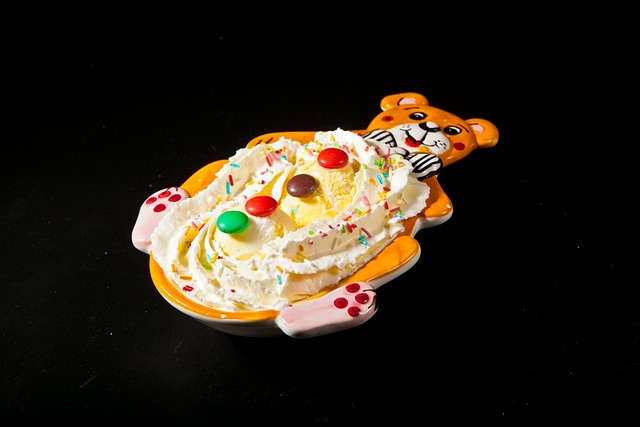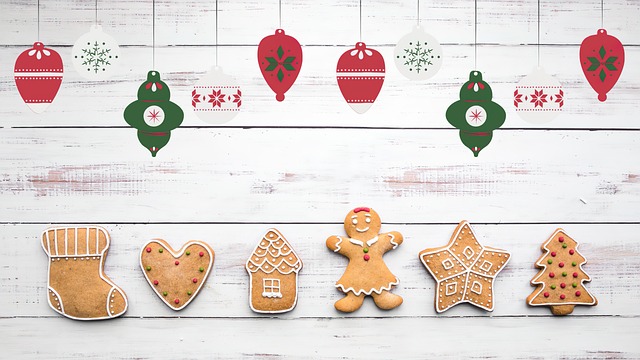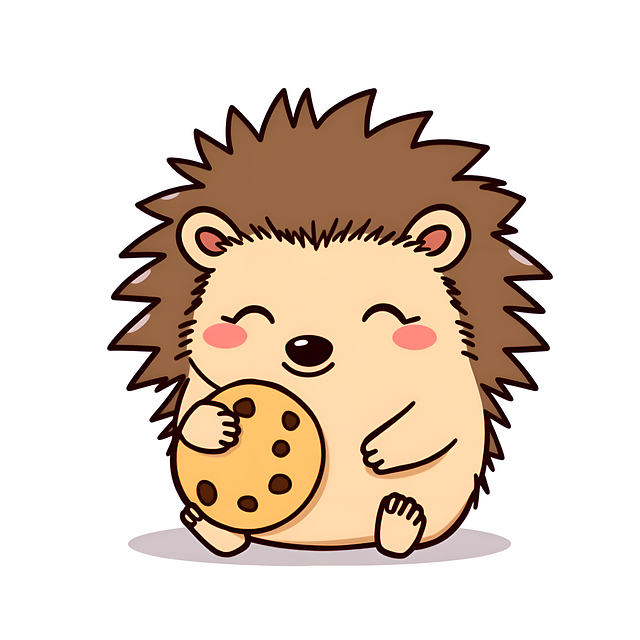QR codes are transforming the culinary industry by offering Personalized Cookies and interactive digital experiences. Restaurants and food brands utilize these 2D barcodes for marketing, delivering tailored content like coupons, nutrition info, and stories directly to customers' devices. This enhances dining experiences, fosters customer engagement, and enables data collection for targeted marketing campaigns. By embedding QR codes in packaging or desserts, businesses can offer unique interactions, from gluten-free options to digital cookie offers, revolutionizing customer connections and driving sales through innovative, personalized strategies.
The food industry is embracing QR codes as a powerful marketing tool, revolutionizing how consumers engage with dining experiences. In this article, we explore the rising trend of QR code marketing on food, focusing on innovative strategies to enhance customer interactions and drive sales. From personalized cookies that deliver tailored content to creative restaurant campaigns, these tech-driven approaches offer exciting prospects. Discover how businesses can leverage QR codes to create memorable moments, boost engagement, and ultimately increase their return on investment (ROI) in the competitive culinary landscape.
- The Rise of QR Codes in Food Marketing
- Personalized Cookies: A Delicious Example
- Enhancing Customer Experience with QR Codes
- How QR Codes Can Drive Sales in the Food Industry
- Creative Ways to Implement QR Code Campaigns for Restaurants
- Measuring Success: Tracking Engagement and ROI
- Future Trends in QR Code Food Marketing
The Rise of QR Codes in Food Marketing

In recent years, the culinary landscape has seen a surge in innovation driven by technology, and at the forefront of this revolution is the humble QR code. Once confined to mundane tasks like product tracking, these 2D barcodes have evolved into powerful marketing tools with immense potential in the food industry. With consumers increasingly demanding personalized experiences, QR codes offer a unique opportunity for businesses to connect with their audience on a deeper level.
Restaurants and food brands are now utilizing QR codes to deliver tailored content directly to customers’ devices. Whether it’s offering personalized coupons for favorite dishes, providing detailed nutritional information, or sharing behind-the-scenes stories about ingredients and preparation, these dynamic codes enhance the dining experience. Moreover, by linking to interactive websites or apps, businesses can gather valuable customer data, enabling them to create targeted marketing campaigns and foster stronger customer relationships.
Personalized Cookies: A Delicious Example

In the realm of QR code marketing on food, personalized cookies stand out as a delectable example. By embedding unique QR codes onto cookie packaging, bakeries and cafes can offer customers an interactive experience. When scanned, these codes lead to customized content such as tailored recipes, nutritional information, or even virtual baking tutorials. This strategy not only enhances customer engagement but also allows businesses to provide personalized insights into their products, appealing to health-conscious folks who appreciate transparency and detail.
Personalized cookies represent a sweet spot where technology meets culinary delight. QR codes enable businesses to offer a level of customization that was previously unimaginable. Customers can scan the code to receive suggestions for gluten-free alternatives, dietary adjustments, or even inspiration for creative cookie decorations. This innovative approach not only drives customer loyalty but also fosters a sense of community among food enthusiasts who value both quality and uniqueness in their treats.
Enhancing Customer Experience with QR Codes

In today’s digital age, QR codes are transforming the way we interact with businesses, especially in the food industry. One of the most significant advantages is their ability to enhance customer experience. When a diner scans a QR code displayed at a restaurant or on a menu item, they’re not just accessing static information; they’re entering into a personalized journey. This technology allows businesses to deliver tailored content like nutrition facts, ingredients lists, or even suggestions for dietary alternatives, ensuring customers have all the necessary details at their fingertips.
Furthermore, QR codes enable interactive and engaging experiences. Restaurants can use them to offer digital cookies—personalized messages or offers that appear on a customer’s device after scanning. This level of interactivity fosters a sense of connection between the consumer and the brand, encouraging repeat visits and creating a memorable dining experience. By leveraging QR codes, food businesses can create a seamless fusion of physical and digital worlds, captivating their customers in innovative ways.
How QR Codes Can Drive Sales in the Food Industry

QR codes offer a unique opportunity for food businesses to enhance customer engagement and drive sales. By integrating these dynamic barcodes into their marketing strategies, restaurants and food brands can provide consumers with a seamless digital experience right at their fingertips. One powerful application is through personalized cookies, where customers scan a QR code on their dessert or packaged goods, leading them to a dedicated landing page with tailored content. This could include exclusive offers, personalized recommendations, or even the ability to customize future purchases, creating a more engaging and satisfying customer journey.
With just one scan, businesses can capture valuable consumer data, allowing for targeted marketing campaigns and improved product development. For instance, a coffee shop might offer a loyalty program through QR codes, rewarding regular customers with personalized discounts based on their previous orders. This level of customization not only boosts sales but also fosters customer loyalty and encourages repeat visits, ultimately enhancing the overall dining or shopping experience.
Creative Ways to Implement QR Code Campaigns for Restaurants

In the realm of restaurant marketing, QR codes offer a dynamic and innovative approach, allowing businesses to connect with customers in unique ways. One creative strategy is to embed these digital links into personalized cookies or baked goods. For instance, a cafe could create special edition cookies with individual QR codes, each directing customers to a customized page featuring exclusive offers, loyalty rewards, or even a digital menu tailored to their preferences. This not only adds a delightful surprise for patrons but also facilitates targeted marketing by capturing their interest and encouraging repeat visits.
Additionally, restaurants can use QR codes on table placemats or as part of an interactive dining experience. By scanning the code, customers might unlock digital games, quizzes related to cuisine, or virtual tours of the kitchen, fostering engagement and creating a memorable dining memory. Such creative campaigns not only attract tech-savvy diners but also encourage word-of-mouth promotion through shareable experiences.
Measuring Success: Tracking Engagement and ROI

Measuring success in QR code marketing for food involves tracking key engagement metrics and understanding return on investment (ROI). By scanning the codes, businesses can gather valuable data on customer interactions, such as unique visits, scan frequency, and time spent engaging with the content. This information helps in gauging the effectiveness of the campaign and identifying peak times when customers are most receptive to offers or promotions.
For instance, a restaurant could offer personalized cookies through QR codes placed on menus, tracking how many customers claim their offers and analyzing redemption rates. By comparing these figures with pre-campaign sales data, they can determine the ROI of their QR code marketing efforts. Additionally, A/B testing different types of content or offers behind the codes allows for further optimization, ensuring that every scan contributes to a better customer experience and increased sales.
Future Trends in QR Code Food Marketing

As technology evolves, QR code marketing in the food industry is set to become even more dynamic and personalized. One promising trend is the integration of AI-driven systems that can analyze consumer behavior and preferences based on QR code scans. This allows for tailored marketing campaigns, such as offering customized discounts or product recommendations tailored to each customer’s taste. Additionally, the concept of “Personalized Cookies” could gain traction, where brands create unique digital experiences for users after scanning a QR code, collecting data to offer personalized food choices and promotions.
Another future trend is the potential use of augmented reality (AR) in conjunction with QR codes. Customers could point their smartphones at a QR code on a menu or packaging to bring up interactive 3D visualizations of food products, enhancing their dining experience and providing more detailed information about ingredients and preparation methods. This blend of technology promises to make food marketing more engaging, personalized, and immersive.
